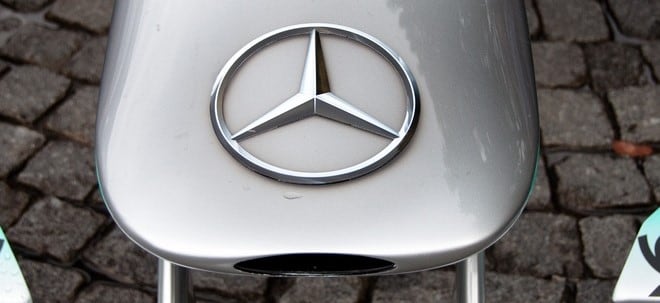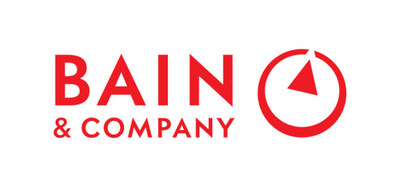Fine wine market and restaurants hit €58 billion in 2024, reinforcing their role as a pillar of global luxury
New Bain & Company and Altagamma report highlights fine wine's prestige and investment appeal and the rebound of fine dining industry, amid shifting consumer trends and market evolution
MILAN, April 7, 2025 /PRNewswire/ -- The fine wine market continues to play a vital role in the global luxury industry, reaching an estimated value of €30 billion in 2024. Sitting at the crossroads of at-home wine consumption and out-of-home dining, this category remains an essential component of the €1.48 trillion luxury market despite its small size, catering the interest of a wide array of consumers. The fine dining industry is rebounding fast, with 27% growth from 2022 to 2024, reaching a projected €28 billion market. Europe leads the sector, housing over half of the world's 14,000 high-end venues.
These insights come from the first-ever Fine Wines and Restaurants Market Monitor report by Bain & Company, in collaboration with Altagamma, unveiled at Vinitaly—one of the world's leading wine and spirits exhibitions.
Despite accounting for just 1.5% of the total wine market by volume, fine wines command 11% of its total value, underscoring their premium pricing compared to mass-market wines. While their market share is smaller than other luxury sectors such as fashion (20-25%) and beauty (15-20%), fine wines maintain a strong presence in the high-end market.
After a decade of steady growth, the sector saw a slight decline of 2-3% in 2024—the first downturn outside of the COVID-19 period—driven by cautious consumer spending, mostly led by inflationary pressures driving downtrading to less premium segments and increasing trends toward alcohol moderation by newer generations.
"Fine wines stand at the crossroads of luxury, celebration, and investment," said Claudia D'Arpizio, Bain & Company partner and leader of the firm's global Fashion & Luxury practice, and the lead author of the study. "They serve as an essential part of daily indulgence for high-net-worth individuals, a cherished component of celebrations of their special moments for large consumer cohorts, and a prized investment for collectors. Whether enjoyed as part of a daily routine, a special occasion, or a curated collection, fine wines transcend just the consumption act, embodying prestige, passion, joy, conviviality, and a deep appreciation for quality."
A legacy-driven, fragmented, and Western-dominated market
The fine wine industry is a unique mix of large-scale leaders and small-scale hyper-fragmented producers. The top 10 brands hold 35% of market share—comparable to luxury goods (39%) and high-end design (29%)—yet showing even greater fragmentation on the long tail, with over 400 players contributing to its structure. The market spans three key segments: Collector (€1-2B), Connoisseur (€8-9B), and Cult (€19-20B), each with evolving competitive dynamics, and distinctive route-to-markets.
Despite its legacy, fine wine remains predominantly Western-centric. In 2023, Europe produced 75% of fine wines, while the Americas and Europe consumed 80%. The Asia Pacific (APAC) and the Middle East and Africa (MEA) account for just 5% of production and 20% of demand, though these regions are showing increasing growth potential. The market is projected to reach €30B by 2024, with Europe maintaining the lead.
While deep-rooted wine culture drives stable consumption in France and Italy, shifting consumer habits pose challenges. The Americas remain strong but are sensitive to economic fluctuations. APAC, once fueled by China's demand, faces trade barriers yet finds new opportunities in Japan and Southeast Asia. MEA sees rising demand through tourism and a growing expat population. As global preferences evolve, emerging markets in the East are unlocking new potential. While Western consumption remains dominant, regulatory shifts and changing tastes in Asia and the Middle East signal a new era for fine wine.
Premiumization
Fine wine consumption has undergone significant premiumization over the past decade, driven by a shift toward quality over quantity. This "drink better" movement has been particularly strong post-pandemic, reinforcing fine wines as a stable asset. Despite economic fluctuations, consumer demand for high-quality drinking experiences has remained resilient, positioning fine wines as a stable asset. This long-term trend of 'drinking better' rather than 'drinking more' highlights the ongoing evolution of the wine industry, with fine wines showing notable recovery and growth in the post-pandemic era.
The rise of "NoLo" beverages among younger generations
Younger generations, especially Gen Z, are increasingly embracing the "NoLo" (No and Low Alcohol) trend, signaling the rise of "young" sober curiosity, evolving preferences and potential market adaptations in the years ahead – with brands that will need to address them with new value propositions that will cater the consumption habits of newer consumers.
Fine dining reinvented: the rise of experiential luxury
The fine dining industry is rebounding fast, with 27% growth from 2022 to 2024, reaching a projected €28 billion market. Europe leads the sector, housing over half of the world's 14,000 high-end venues. While traditional fine dining still dominates (98% of venues), immersive experiences—blending food, entertainment, and social engagement—are on the rise, set to capture 15-20% of the market in 2024. Fine wines remain integral, with wine pairings accounting for up to 40% of starred restaurant revenues in some cases, contributing with an estimated overall value of €6-7 billion in 2024. More than 50% of the wine consumed outside the home is sparkling (whether Champagne or other varieties) – largely associated with celebratory occasions, but also increasingly integrated into wine tourism experiences. After the pandemic, customers are seeking authenticity, shared experiences, and emotional engagement, transforming restaurants into cultural and social hubs.
Investment potential and market resilience
Fine wines are increasingly recognized as an asset class, benefiting from limited supply and strong demand. With a more than twofold price appreciation over the past decade, fine wines have outperformed other luxury assets, including handbags, jewelry, and watches. The sector remains resilient against economic downturns, further enhancing its investment appeal. In the last five years, fine wine indexes, such as Liv-Ex Champagne-50 and Liv-Ex Italy-100, have grown by 34% and 20%, respectively, reinforcing their status as a long-term investment.
New challenges: consolidation and climate change reshape the sector
The U.S. is leading a wave of fine wine consolidation, with 30 M&A deals annually totaling $8 billion—transaction values doubled from 2022 to 2023. Europe is following suit, with Italy and France closing 10 deals in 2024. This trend is driving market expansion, innovation, and resilience amid economic volatility, setting new industry benchmarks. At the same time, climate change is redrawing the wine map. Southern regions face rising temperatures (+3°C from flowering to harvest in 2024) and extreme droughts (-50mm rainfall), threatening traditional vineyards. Meanwhile, northern areas like Denmark, will gain ground with longer growing seasons and milder conditions. If the climate challenge is not addressed Cabernet Sauvignon, once exclusive to southern Europe, may thrive in central and northern regions by 2100. To adapt, the industry must invest in policy reforms, agricultural technology, and collaborative solutions to ensure a sustainable future. From 2015 to 2024, major Italian fine wine brands maintained steady earnings before interest and taxes (EBIT) margins of 15-17% despite market swings. Despite France's dominance—nine of the top 10 brands and 95% retail value share—Italy's diversity offers growth potential, and unique storytelling opportunities, with 20 wine regions and 1,000 grape varieties (vs. France's 13 regions, 250 varieties).
The future of fine wines
Looking ahead, the fine wine market sits on sound fundamentals for steady growth, with projections indicating a rise from €30 billion in 2024 to €35-40 billion by 2030, representing a 4-6% compound annual growth rate (CAGR) from 2025. However, intensified trade tensions, with new tariffs potentially impacting European exports to the US, could put at risk some of the projected growth, particularly in the entry level portion of the market. At the same time, Western markets will remain dominant, while emerging regions such as Asia and the Middle East present untapped opportunities, alongside consolidation efforts reshaping the industry.
"The fine wine sector continues to evolve, balancing tradition with innovation. While the market faces short-term headwinds, its fundamentals remain strong, positioning it as a core component of the luxury landscape for years to come," said Federica Levato, partner at Bain & Company and leader of the firm's EMEA Fashion & Luxury practice and co-author of today's report.
Editor's Note: For a media pack on the above findings, questions, or to schedule an interview; please contact Orsola Randi at orsola.randi@bain.com or +39 339 327 3672.
About Bain & Company
Bain & Company is a global consultancy that helps the world's most ambitious change makers define the future.
Across 65 cities in 40 countries, we work alongside our clients as one team with a shared ambition to achieve extraordinary results, outperform the competition, and redefine industries. We complement our tailored, integrated expertise with a vibrant ecosystem of digital innovators to deliver better, faster, and more enduring outcomes. Our 10-year commitment to invest more than $1 billion in pro bono services brings our talent, expertise, and insight to organizations tackling today's urgent challenges in education, racial equity, social justice, economic development, and the environment. We earned a platinum rating from EcoVadis, the leading platform for environmental, social, and ethical performance ratings for global supply chains, putting us in the top 1% of all companies. Since our founding in 1973, we have measured our success by the success of our clients, and we proudly maintain the highest level of client advocacy in the industry.
![]() View original content to download multimedia:https://www.prnewswire.com/news-releases/fine-wine-market-and-restaurants-hit-58-billion-in-2024-reinforcing-their-role-as-a-pillar-of-global-luxury-302420937.html
View original content to download multimedia:https://www.prnewswire.com/news-releases/fine-wine-market-and-restaurants-hit-58-billion-in-2024-reinforcing-their-role-as-a-pillar-of-global-luxury-302420937.html
SOURCE Bain & Company


